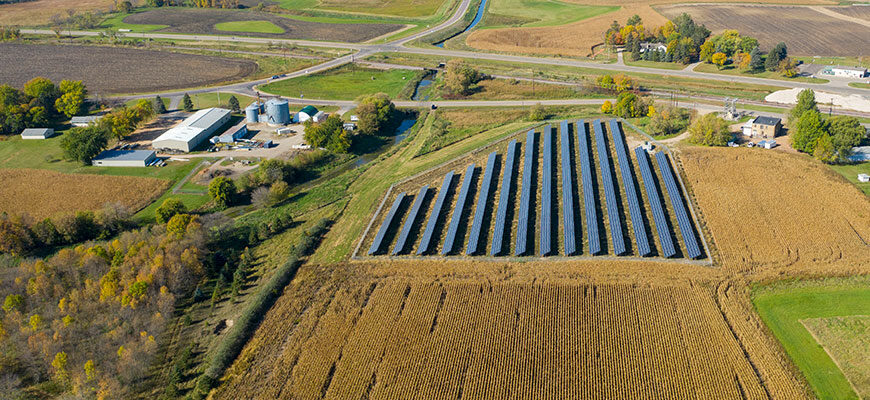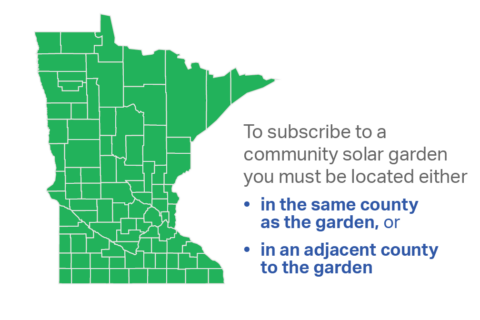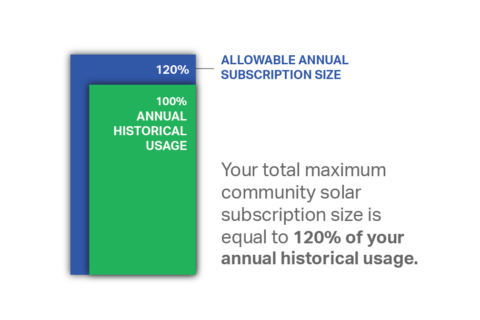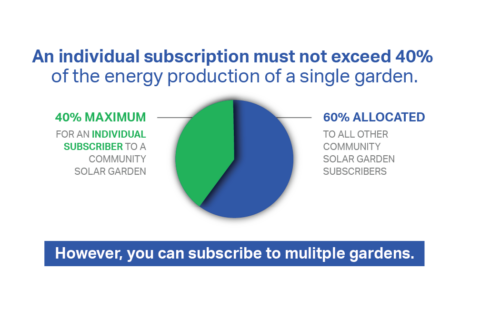- October 14, 2021
- by Nokomis Energy
 What is community solar?
What is community solar?
When people talk about community solar or a community solar garden, they are referring to a solar project where the benefits generated are shared by multiple customers such as individuals, businesses, schools or even municipalities. Community solar participants subscribe to one or more community solar gardens and receive electricity bill credits based on the electricity generated at their garden.
Only about a third of states in the US currently have policies that allow for community solar, but that number seems poised to expand. As of 2020, almost 75% of the total market was concentrated in four states: Minnesota, Florida, Massachusetts and New York.
In Minnesota, community solar projects are typically built on unproductive or underutilized farmland. Oftentimes, the land ownership rights are maintained by the farm families who own the land and they receive lease payments on the property for the lifetime of the community solar garden.
> Watch a 3-minute Community Solar Overview Video
Why community solar?
Community solar offers a way to both save money and to support the advancement of clean energy solutions in your region, without the commitment or cost of installing solar panels on your own property or facilities.
Community solar gardens are carefully sited based on the energy needs and the infrastructure in the surrounding region. By building solar projects in the places where the energy can be collected and distributed most effectively, community solar provides a cost-effective opportunity for everyone to benefit from the clean energy transition – not just those with the space or resources to install their own panels.
Who can participate in community solar?
In Minnesota, the largest community solar program is administered by Xcel Energy and is open to all Xcel customers. It’s called the Solar*Rewards Community program and Xcel customers participate by subscribing to a community solar garden through a private solar developer.
Customers of other utilities in Minnesota may be able to subscribe to a community solar garden offered by their specific utility. The best thing to do is reach out to your Utility for more information.
Here is a resource that can help you find community solar projects near you: www.energysage.com/local-data/community-solar/mn
> How Does Xcel’s Solar*Rewards Community Program Work?
Three steps to see the benefits of community solar
 1. Build
1. Build
A community solar garden is developed and built by a clean energy developer or Xcel Energy, usually on unproductive or underutilized agricultural land.
Upon completion, the solar panels produce electricity which is fed into the electrical grid. The electricity is purchased by Xcel Energy from the operator of the solar garden via bill credits at a rate defined by a methodology administered by the MN Department of Commerce called the Value of Solar.
This methodology ensures that one kWh of electricity production equals one bill credit.
2. Subscribe
The bill credits, which are essentially coupons that can be applied to an Xcel Energy bill, are sold to Xcel customers in the same or adjacent county as the solar garden.
Subscription contract terms can vary but typically match the 25-year term of the solar garden’s contract with Xcel Energy and provide 5-20% savings off the customer’s annual electricity costs. Xcel customers can subscribe up to 120% of their annual electricity usage (as determined by Xcel Energy) and a subscriber can be no more than 40% of the total subscription of a single solar garden.
Subscribers receive bill credits applied directly to their Xcel bill each month, based on the amount of electricity produced by their portion of the solar garden. Solar garden operators then invoice the subscribers for each bill credit they receive at a rate called the subscription rate. Typically, the subscription rate is either a fixed percentage of the bill credit rate or a fixed dollar amount lower than the bill credit rate. The difference between the total bill credit value and the total subscription payment value equals the savings realized by the customer each month.
Savings = Bill Credit Value – Subscription Payment Value
3. Save
Over the course of the subscription, subscribers will receive credits each month and then pay the solar garden operator a portion of their bill credits as part of the contract. The subscription payments are used by the solar garden operator to finance the operations of the solar system.
If a customer’s Xcel bill in a given month goes negative due to the bill credit value being more than the cost of the Xcel service, the net value rolls over to the next month. If at the end of a calendar year a customer has a net credit balance on their Xcel bill, Xcel Energy sends out a check in that amount by April.
Does it seem like community solar might be a good fit for you? Contact us to discuss how your business or organization can make the most of the clean energy transition.
Nokomis Energy is a clean energy developer based in Minneapolis, Minnesota. Our mission is to identify opportunities to create clean, low-cost energy projects for the people, businesses and communities of the Upper Midwest. We work directly with our customers and partners to implement and build clean energy solutions that work for your specific needs.


 What is community solar?
What is community solar? 1. Build
1. Build